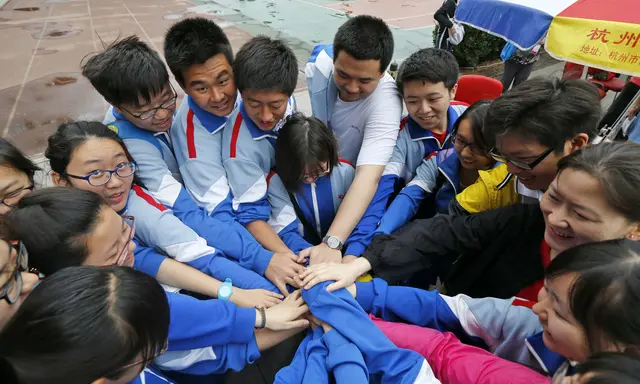Gaokao is no ordinary test in China.
From praying parents accidentlly burning down trees, to forking out a 100,000 yuan to prepare for the career-defining exam, the most important time in a Chinese student's schooling is eventful, to say the least.
We've brought together everything you need to know about what students achieve by sitting the test, how it is continually changing and what gaokao has in store for students and their families, this year.
1. Basic facts about gaokao
Graphics: China Daily
2 . How much does it cost to prepare for gaokao?
Preparing for the entry exam is no easy feat – for the brain cells, or the hip pocket.
In fact, it can cost up to 100,000 yuan when paying for extra classes, nutrimeals, school housing and private tutorials.
But it wasn't always this way. In the 1970s – less than fifty years ago – it would cost no more than five yuan.
Graphics: China Daily
**3. Gaokao reforms
**
Few people question the importance of the Gaokao, but it has flaws, such as an over-emphasis on academic performance.
Students in Zhaoping, South China's Guangxi province, have a light moment on June 6, one day before the national college entrance examination. Photo: China Daily
Several changes about Gaokao are in the pipe. Those include spreading out assessments over multiple tests, giving students second-chance exams, making the exams uniform across all regions and significantly cutting bonus points.
This year's exam will also be the first in which cheating is a criminal act.
4. Top scorers
How many students take the first spots, also known as zhuangyuan, in gaokao? And what do they do after?
Thankfully, an annual report has answered those questions by tracking down top-scorers over the past decades.
It seems Peking University is the college-of-choice among the most gifted students – 835, to be exact – while economics is the most popular subject.
Liu Zhixin, Beijing's top gaokao scorer in science, goes to Peking University for registration on Sept 5, 2015. Photo: China Daily
A total of 835 top-scorers at the provincial-level in the country's national college entrance examination, or gaokao, became Peking University students between 1977 and 2015, a recently published report by a consultancy company showed.
The report, by consultancy company cuaa.net, looks at top-scorers from across the country in the past few decades, before this year's gaokao is sat between June 7 and 9.
Tsinghua University, another top university, followed Peking University to receive 668 top scorers. Fudan University enrolled 55 to rank third, while the University of Science and Technology of China received 54.
The economics major has been the most popular among top scorers, attracting 343 students, followed by business administration and electronic information engineering.
5. China's ancient gaokao system
The annual China's national college entrance exam, or gaokao, takes place today, and many parents see it as an opportunity to help their child change his or her destiny.
The photo shows a model of an examination hall for the keju imperial examinations in ancient China. Photo: China Daily
But how did people in ancient China manage to change their destiny? Basically - they would take the imperial examination, or keju, which began during the Sui Dynasty (AD 581-618) and lasted for 1,300 years before it was abolished in the Qing Dynasty (1644-1911).
Keju, the earliest "gaokao", played a very important role in selecting qualified personnel to work for the imperial court.
(CHINA DAILY)
 简体中文
简体中文

